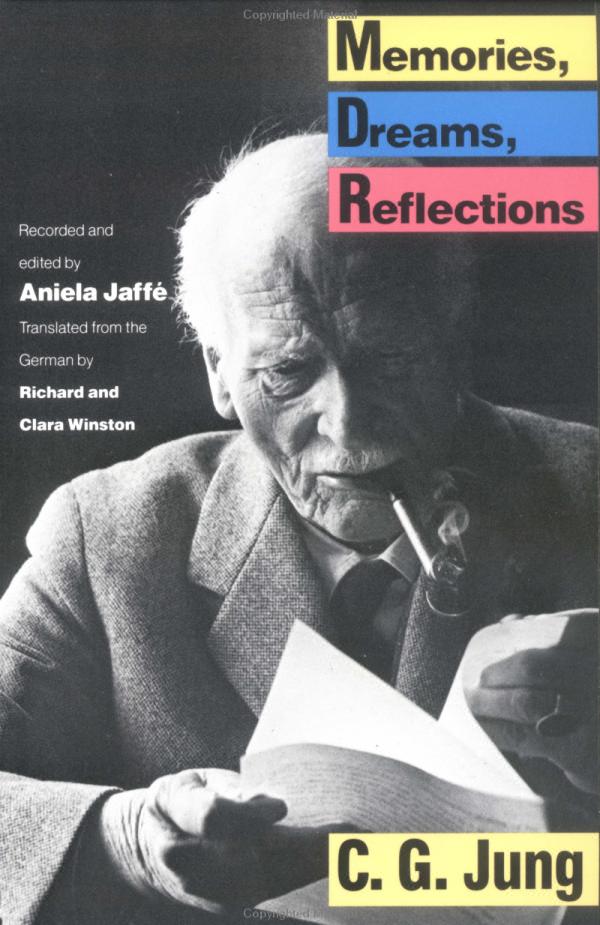
Memories, Dreams, Reflections
Book Description
Dive into the mind of a legend, where dreams interweave with memories, revealing the profound depths of the unconscious. C.G. Jung invites you on a gripping journey through his inner landscape, where visions clash with reality and personal revelations become universal truths. Each page uncovers startling insights into the human psyche, illuminating themes of identity, spirituality, and the eternal battle between light and shadow. As Jung navigates his own struggles, he raises haunting questions about the nature of existence and the mysteries that lurk within us all. What untapped potential lies buried in your own mind?
Quick Book Summary
"Memories, Dreams, Reflections" is the extraordinary autobiography of Carl Gustav Jung, the famed Swiss psychiatrist and psychoanalyst. Blending recollected memories, dreams, meditations, and reflections, Jung leads readers on a journey into the landscapes of his personal unconscious and collective psyche. The book reveals how formative experiences, visions, and relationships shaped both Jung’s personal philosophy and contributions to psychology. Rather than following a strict chronology, Jung delves into the most pivotal moments of his inner life, exploring creativity, scientific discovery, spirituality, and the symbolic language of the unconscious. Through mysticism, myth, and analytical thought, Jung illuminates the universal search for meaning, highlighting how understanding the depths of our own psyche can connect us to something profoundly greater.
Summary of Key Ideas
Table of Contents
The importance of the unconscious and dreams
Jung’s introspective narrative begins with vivid childhood memories that set the stage for his lifelong fascination with the psyche. Early encounters with nature, family dynamics, and spiritual experiences awaken Jung’s awareness of an inner world teeming with symbols and mysteries. He recalls pivotal dreams and early visions that sparked his curiosity about unconscious forces, foreshadowing the central role that these elements would play in his professional and personal development.
The process of individuation and self-discovery
As Jung matures, he examines the concept of the unconscious and its manifestation through dreams. He relates powerful dream sequences and moments of visionary insight, presenting them as sources of profound meaning. Through these explorations, Jung lays the groundwork for his later theories on archetypes and the collective unconscious. He describes dreams as both personal and universal, offering keys to understanding the hidden aspects of human nature and the shared storehouse of mankind’s psychological inheritance.
Encounters with spirituality and the numinous
Central to the memoir is Jung’s process of individuation—the psychological journey toward wholeness and self-realization. He explains how facing one’s own shadow, integrating conflicting aspects of the psyche, and embracing the unknown are necessary steps for authentic personal development. Through careful self-examination and creative expression—including his artistic work on mandalas and The Red Book—Jung illustrates the gradual unfolding of the self.
The interplay between personal and collective experience
Spirituality emerges as a recurring motif as Jung reflects on his mystical experiences and engagement with religious symbolism. Encounters with the numinous—experiences that evoke awe and spiritual significance—profoundly shape his understanding of existence. Jung’s studies of alchemy, Eastern religions, and Western mysticism reinforce his belief in a transcendent dimension underlying psychological realities. He emphasizes that the search for meaning is not only an individual quest, but rooted in humanity’s eternal longing for connection with the divine.
Throughout his reflections, Jung also considers his relationships with others and with the broader culture. He discusses his collaboration and eventual divergence from Freud, and explores the way collective myths, cultural patterns, and personal encounters intertwine. By situating his inner journey within the context of wider human experience, Jung underscores that personal transformation contributes to collective psychological evolution. Ultimately, "Memories, Dreams, Reflections" becomes an invitation to awaken to the mysteries within, forging a creative alliance between consciousness and the vast unknown.
Download This Summary
Get a free PDF of this summary instantly — no email required.





